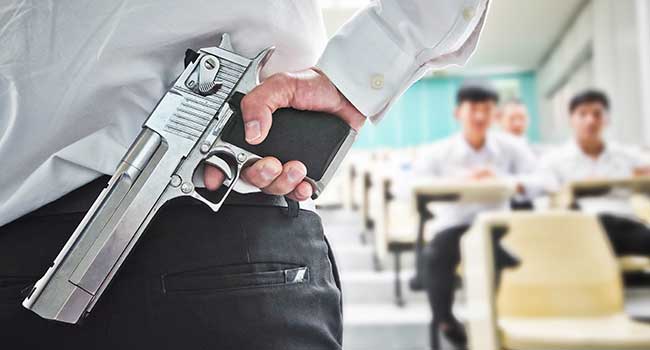
Florida Legislators Approve Bills to Create School Marshal Program
The goal of the school marshal program is to have 10 “marshals,” or teachers trained to carry a gun, in every school, a total of 37,000 statewide.
Florida legislators took steps Tuesday to arm teachers in the wake of the shooting at Marjory Stoneman Douglas High School in Parkland, Fla., that left 17 people dead. The House and Senate Appropriation Committees both voted to approve bills that would create a new statewide program to arm teachers in classrooms, though the pieces of legislation differed in details.
The House bill creates a $67 million “school marshal” program that would train teachers and allow them to carry weapons in districts where the school board supports it. Additionally, it provides $400 million to add school resource officers in every public school and improve mental health counseling.
The Senate bill says districts can adopt the school marshal program, but the school district officials and sheriff must both agree. For these initiatives to become law, the full Florida House and Senate would have to agree to the same program.
The goal of the school marshal program is to have 10 “marshals,” or teachers trained to carry a gun, in every school, a total of 37,000 statewide. Background checks, drug testing, psychological exams and 132 hours of training would be paid for by the state, and the House bill provides a one-time $500 stipend for teachers who volunteer to carry a gun.
In addition to the school marshal program, both the House and Senate bills impose new limits on purchasing guns, adding a three-day waiting period and raising the gun purchasing age from 18 to 21. The pieces of legislation also include more power for police to seize guns from those who threaten themselves or others.
The proposed legislature still requires the approval of the full House and Senate and Gov. Rick Scott’s signature to be enacted. The governor has said he is opposed to “arming teachers.”